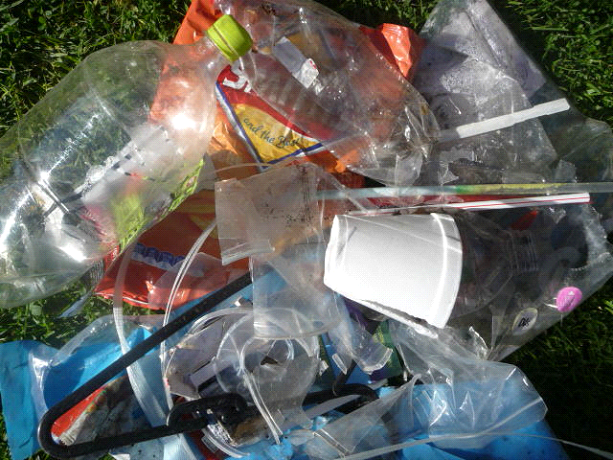Marine Plastic Pollution in Waters around Australia: Characteristics, Concentrations, and Pathways
Posted on October 30, 2015 by DrRossH in Plastic Waste NewsPlastics are a diverse group of materials derived from petrochemicals [1]. Their global production has grown exponentially from 1,700,000 tonnes in 1950 to 280,000,000 tonnes in 2011 [2]. The disposability of plastics, together with their low recycling rates, has contributed to a significant rise in the amount of waste produced globally [3]. For instance, in Australia, 1,433,046 tonnes of plastics were used in 2010–2011, of which only 20% was recycled. Moreover, around 37% of this plastic was for the manufacturing of single-use disposable packaging [4]. Plastics are transported from populated areas to the marine environment by rivers, wind, tides, rainwater, storm drains, sewage disposal, and even flood events. It can also reach the sea from vessels (e.g. fishing gear) and offshore installations [5]. Once in the oceans, they will either float at the ocean surface, or sink to the seafloor if made from polymers denser than seawater [6]. Buoyant plastics may be cast ashore by inshore currents or winds [7], or may enter the open ocean, where they tend to accumulate in convergence zones such as the ones formed by the five large-scale gyres (South and North Pacific, South and North Atlantic, and Indian.
Nice work.

 How many people today grab a takeaway coffee cup from the local cafe to drink on the go? We don’t know, but the number must be enormous.. Most every one of the above have a plastic top that will last 100s of years. Some cafes still use plastic cups that last a similar time. Is 10 minutes of coffee worth 100s of years of trash?
These items can be seen littering our gutters and on our streets all over the place. If they were all cardboard, they would still be littered, but they would, at least, be gone in a short time.
They do not need to be made of plastic.
How many people today grab a takeaway coffee cup from the local cafe to drink on the go? We don’t know, but the number must be enormous.. Most every one of the above have a plastic top that will last 100s of years. Some cafes still use plastic cups that last a similar time. Is 10 minutes of coffee worth 100s of years of trash?
These items can be seen littering our gutters and on our streets all over the place. If they were all cardboard, they would still be littered, but they would, at least, be gone in a short time.
They do not need to be made of plastic.
 On the way home from the gym last week, a distance of about 1 km (1/2 mile), I counted the items of plastic litter on the curb as I walked. In that short distance I counted 63 pieces of plastic litter. Plastic drink bottles, bottle tops, candy wrappers, plastic film, polystyrene fragments etc. That seemed to be a lot to me. I guess it is a generational thing. Our parents would have been horrified to see that amount, whereas it seems to go unnoticed by our youth of today. In another 20 years how many pieces will there be on this stretch, -- 200? What will today’s youth think of that new amount then when they are older? Will their children be so readily accepting of a higher amount of litter?
On the way home from the gym last week, a distance of about 1 km (1/2 mile), I counted the items of plastic litter on the curb as I walked. In that short distance I counted 63 pieces of plastic litter. Plastic drink bottles, bottle tops, candy wrappers, plastic film, polystyrene fragments etc. That seemed to be a lot to me. I guess it is a generational thing. Our parents would have been horrified to see that amount, whereas it seems to go unnoticed by our youth of today. In another 20 years how many pieces will there be on this stretch, -- 200? What will today’s youth think of that new amount then when they are older? Will their children be so readily accepting of a higher amount of litter?
Discussion · No Comments
There are no responses to "Marine Plastic Pollution in Waters around Australia: Characteristics, Concentrations, and Pathways". Comments are closed for this post.Oops! Sorry, comments are closed at this time. Please try again later.